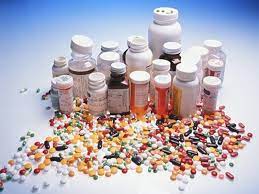Modern Medicine has contributed enormously to improving the overall health of patients, controlling diseases, managing outcomes, and keeping people productive parts of society. Diseases, especially the longstanding chronic illnesses, are controlled by medications belonging to different classes of chemicals and therapeutic agents. These drugs have been used for quite some time with good safety margin. This means that although these medications/ drugs are used to treat patients safely, but they are not free of any side effects. Whenever the doctors, pharmacists and nurses are taught about the medications, they are also taught about their side effects and untoward effects and toxicities.
There can be several types of potential problems and issues to be kept in mind by the doctors prescribing these drugs. Same way this safety should be ensured by nurses and pharmacists dispensing and administering these medications. These safety concerns, issues and problems can be grouped as under:
- Side effects: As per Cambridge online dictionary(1), “an unpleasant effect of a drug, medical treatment, or vaccine (a substance put into a person’s body to stop them getting a disease) that happens in addition to the main intended effect”. These effects can occur in most or some patients who take those drugs. Most common variety is nausea, vomiting, stomachache, fast heartbeat, headache and similar minor aches and pains.
- Allergic reaction(2): Allergic reactions are reaction of the immune system of body against any chemical that body perceives as outsider. It is a protective response, but at times can harm the patients. These reactions can be life threatening especially when they affect the airway causing inability to breathe.
- Toxicity: These are dose-dependent effects and at times can be life threatening. Most of these effects are well known and the dose of the medication is kept in tight balance to avoid toxicity. Toxicity depends upon the medication level in the body and blood. So, anything that can affect these levels can result in toxicity.
All patients who are treated for multiple conditions or diseases that have been going on for prolonged periods usually take more than a few medications. The problems translate into a condition called POLYPHARMACY.
Nashwa et al(3), in the review article, explains that in literature, five or more medications taken by the patients, constitute polypharmacy. There is no agreement on duration of treatment. We know that the longer people take many medications, the higher would be the chances for any mishap. And the best way to avoid polypharmacy is not a straightforward way at time to limit the number of medications.
WHAT CAN WE DO TO AVOID THE RISKS ASSOCIATED WITH POLYPHARMACY?
We should know that the risks of polypharmacy are real, and that at times we cannot avoid prescribing several medications to stabilize the patient’s condition. This means we must be vigilant in our treatment and medications strategy to avoid any issues from polypharmacy. These steps or strategies include following:
- Avoiding multiple doctor’s consultations. This is an extremely crucial step in making sure we avoid polypharmacy. In Pakistan it is common to consult many doctors for same issues or problems, and most of the times the doctors are not aware that the patient is getting treatment from some other doctor. This can lead to at times duplication of the treatment or, at time getting medications which should not be given together.
- Take all your medicines with you on each doctor’s visit. It is extremely important that the doctor is aware of each medicine that the patient is taking, to decrease the risk of duplication or combining some medication which should not be given together.
- Checking your blood tests periodically to make sure there is no avoidable issue from the prolonged use of medication. The most important are the changes in blood chemicals and kidneys getting damaged.
- Usually, one pharmacy to buy medicines. Although the Pharmacist and pharmacies don’t keep records of patient’s medications in Pakistan, still some of the pharmacist take time and remember their patients regular medications that they dispense. This creates a layer of safety against polypharmacy. The pharmacist can stop duplication, and similar other risks by reviewing the older prescriptions along with the new medicines and serves a great safety check for their patients.
- Avoiding self medication. This is also a common concern, as patients, their loved ones, friends and acquaintances give advise to add or subtract medicines on their own with out consulting the doctors. They also consult different doctors on phone and get incomplete advise and change or add medications. It puts patients in the state of being unsafe, and these actions should always be avoided.
- Take extra precautions with the elderly. The elderly patients are more prone to these situations. The issue is that they have multiple medical problems, see multiple doctors, and take multiple medications. Their care is done by multiple other attendants too, and this creates chances for problems with multiple medications. We need to make sure we manage them well and discuss all their problems with doctors to avoid unsafe situation.
We do realize that polypharmacy is necessary for some patients, but there should always be concern and caution in taking multiple medications to avoid any situation that can put patients heath at risk. We all have to create this understanding and work together to keep us all safe and avoid situations risking health and safety of the elderly and sick.
References:
- Cambridge English Dictionary: Meanings & Definitions [Internet]. 2023 [cited 2023 Nov 21]. Available from: https://dictionary.cambridge.org/dictionary/english/
- Cleveland Clinic [Internet]. [cited 2023 Nov 21]. Allergies: Symptoms, Reaction, Treatment & Management. Available from: https://my.clevelandclinic.org/health/diseases/8610-allergies
- Masnoon N, Shakib S, Kalisch-Ellett L, Caughey GE. What is polypharmacy? A systematic review of definitions. BMC Geriatr. 2017 Oct 10;17(1):230.

